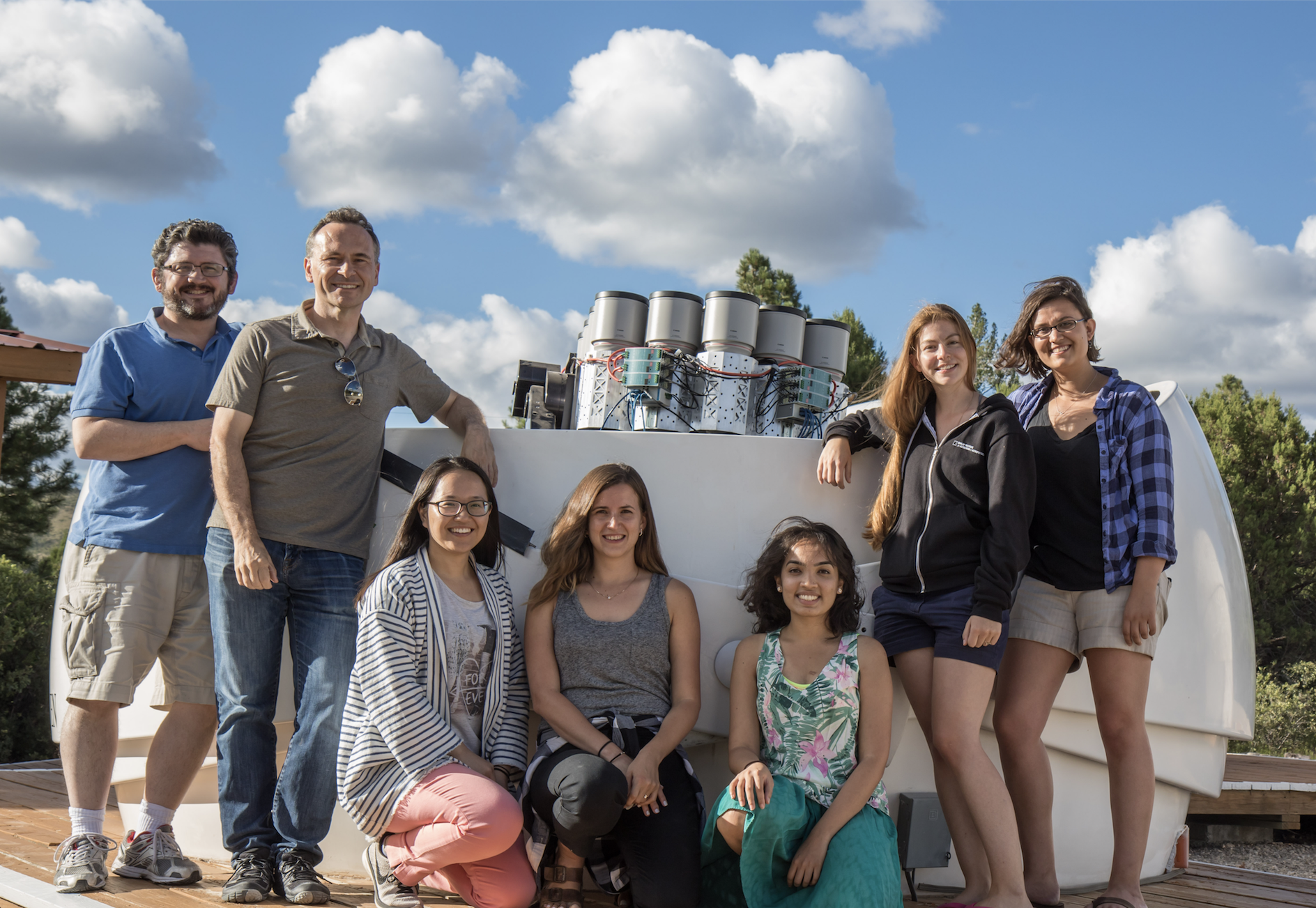
Overview
Postdoctoral Fellow
My work centres on creating techniques that allow us to see things we couldn't see before. This work spans astronomy and medical imaging.
I am currently an OzGrav Postdoctoral Research Fellow at the Swinburne University of Technology, Melbourne, Australia. My research seeks to discover the mysteries of how the Universe changes second to second with Prof. Jeff Cooke as part of the Deeper Wider Faster Program. OzGrav is the ARC Centre of Excellence For Gravitational Wave Discovery (OzGrav).
More content on multi-messenger astronomy, and the transient sky, coming soon.

The Draognfly Telephoto Array
During my PhD at the University of Toronto, I helped build the Dragonfly Telephoto Array, the world’s best telescope for low surface brightness observations of the Universe. I led the development of the image processing software for Dragonfly and used it to study galaxies and dust in the Milky Way. I was advised by Prof. Roberto Abraham and Prof. Peter Martin.
Over the past 40 years the cutting edge of astronomical imaging has transitioned from photographic plates on ground based telescopes to CCD detectors on space telescopes. This has improved the ability to detect small and faint galaxies by a factor of about 600. Over this same period of time, there has been no improvement in our ability to detect large but faint (low surface brightness) structures in the Universe. This is because the limiting factor in this case is not photon statistics or image resolution, it is control of systematic errors, such as the scattering of light inside the telescope itself, sky subtraction, flat fielding and the wide-angle point-spread-function
Dragonfly has succeeded in breaking these technical barriers through hardware and software innovations. It consists of an array of 48 Canon telephoto lenses, which utilize novel sub-wavelength, nanostructure-grown optical coatings, reducing scattered light within the telescope. Dragonfly observes by pointing all 48 lenses at the same target, and reducing the data from the instrument presents some formidable logistical challenges. I led the development of the data management and imaging processing software that allowed these challenges to be overcome. My software automatically backs up the enormous number of images collected each night into the cloud, and two other geographically disparate computers. It addresses systematic errors associated with sky subtraction, flat fielding and the wide-angle point- spread-function with great care.
My collaborators and I have used it to make a series of remarkable discoveries concerning phenomena in the low-surface brightness Universe over the last three years. You can find a link to my PhD thesis, and the Dragonfly webpage below. My Google Scholars Page and ORCID page are linked above.

Fetal Ultrasound
Ultrasound imaging is the primary point of care tool for health monitoring throughout pregnancy, however ultrasound data presents significant challenges to interpretation and software analysis. Ultrasound-specific fetal brain atlases at different gestational ages can be used as a point of reference to diagnose developmental abnormalities. In regions where the availability of trained sonographers are scarce, these atlases can be used for automatic software diagnosis. I am working on a semi-automatic software package for ultrasound-specific fetal brain atlas construction, using deep learning methods. This software package will also be useful for processing, analyzing and extracting information from individual and cohorts of brain volumes. Atlases can be produced for healthy fetal development can be used to diagnose deviations from the norm, while various condition-specific atlases can be used to do specific disease diagnostics.
This work was started with the support of the Schmidt Science Fellows program in partnership with the Rhodes Trust, at the University of Oxford where I was hosted by Professor Alison Noble. I worked in close collaboration with Dr. Ana Namburete, Dr. Bartlomiej Papiez.